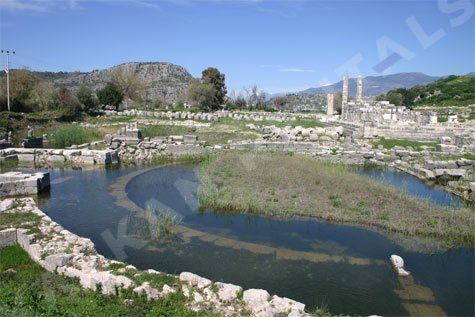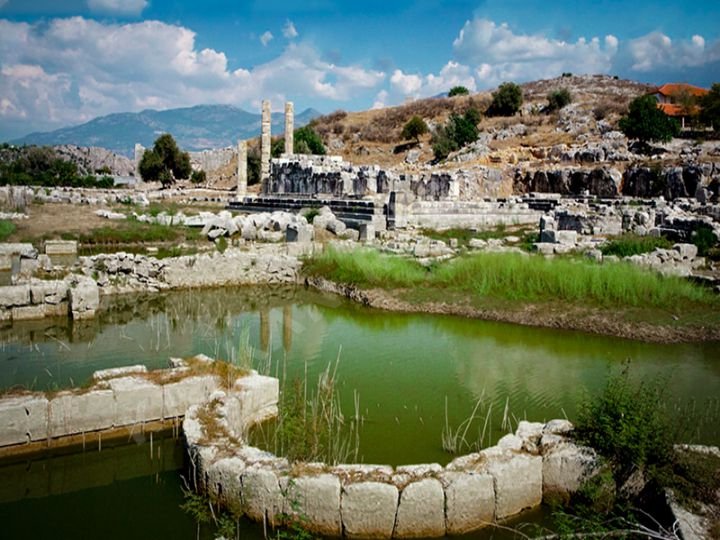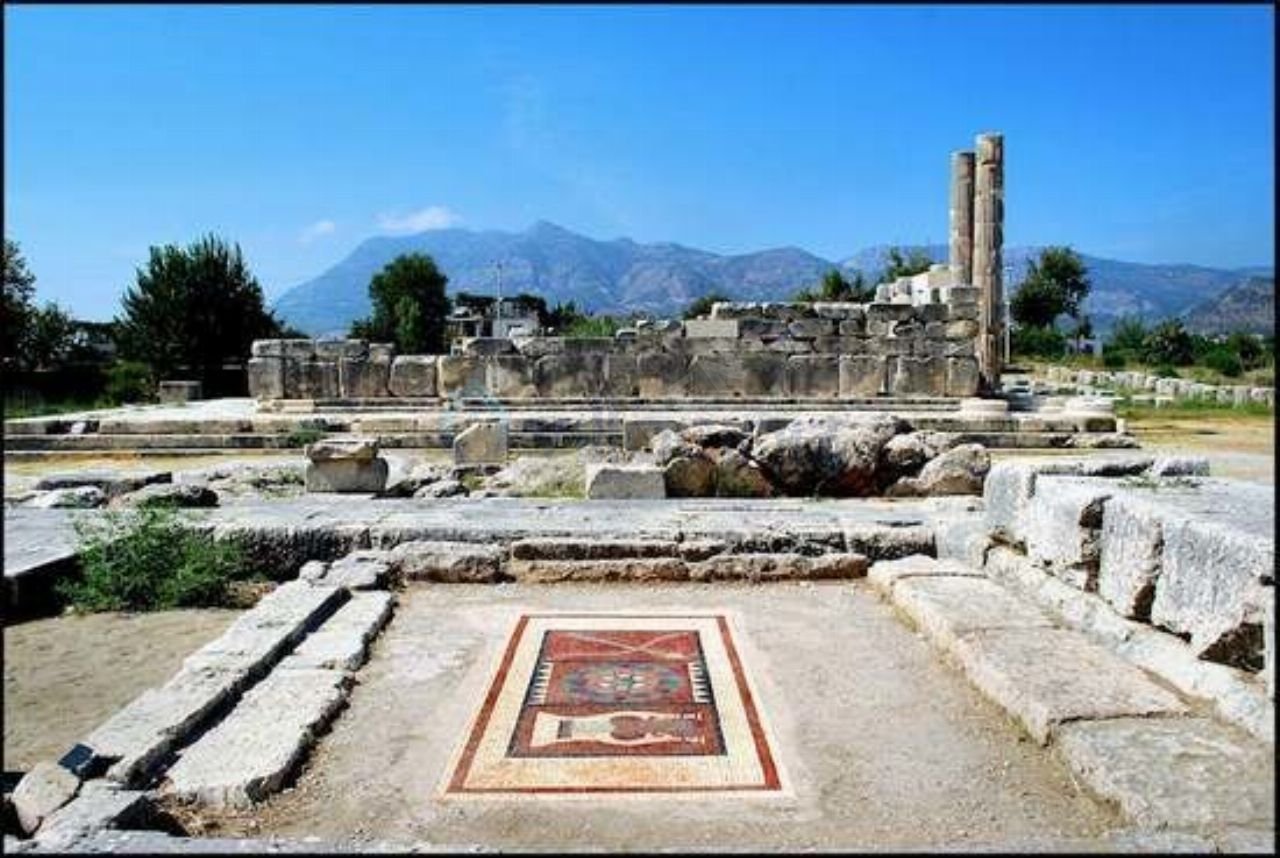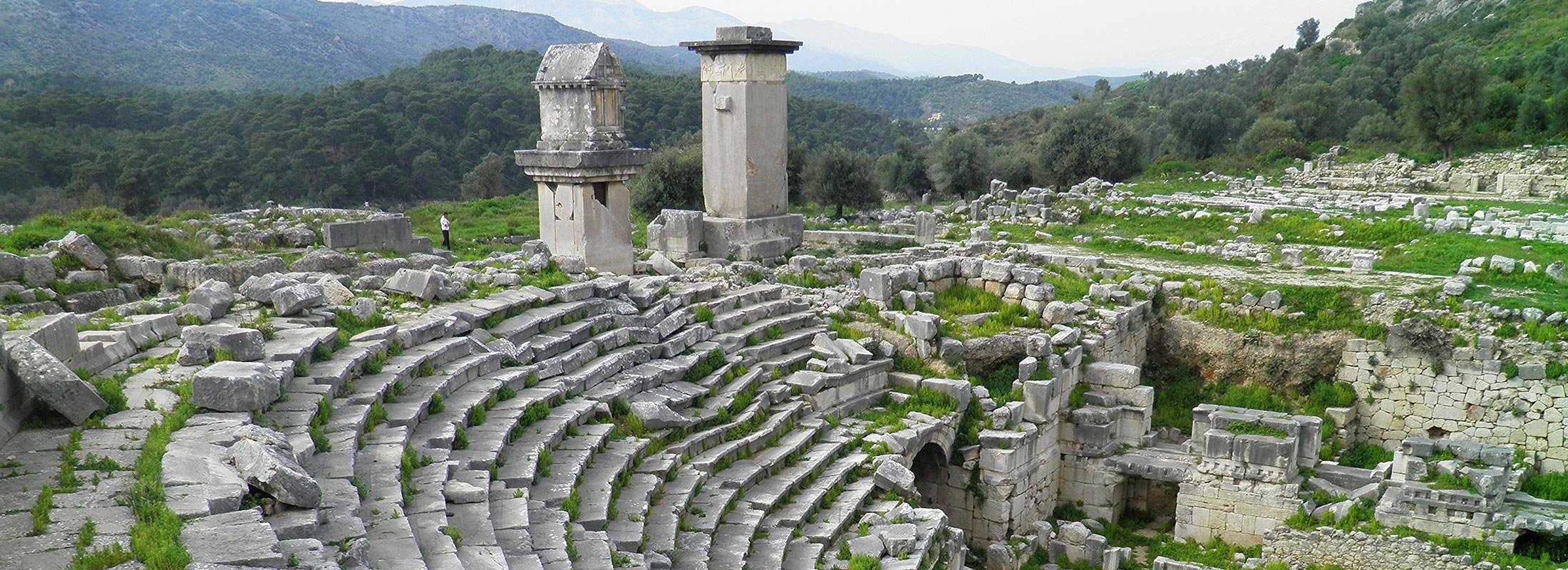Letoon in its history was known as a safe haven to many with its most famous religious sacred grounds. It was not a large dwelling as it was never fully occupied, but had small settlements in the surrounding areas. It was also known as the meeting ground for pagan festivities and annual rituals until around the 5th century AD when Lycia was attacked by the Arabs and at around the same time when the area was beginning to be swallowed up by sludge brought in from the Xanthos River.
The foundations of the Hellenistic temple dedicated to Leto, and her children, Artemis and Apollo, have been excavated starting in 1962. Archaeologists have excavated much of the ruins; discoveries include the Letoon trilingual, bearing inscriptions in Greek, Lycian and Aramaic, which has provided crucial keys in the deciphering of the Lycian language; it is conserved in the Fethiye Museum. The site remained active through the Roman period. The site was Christianised by the construction of an early church, which re-used cut stone from the sanctuary, but was abandoned from the 7th century AD.
Today the ruins and its fascinating in depth history can be seen and read at its historical site within easy reach from Kalkan.









